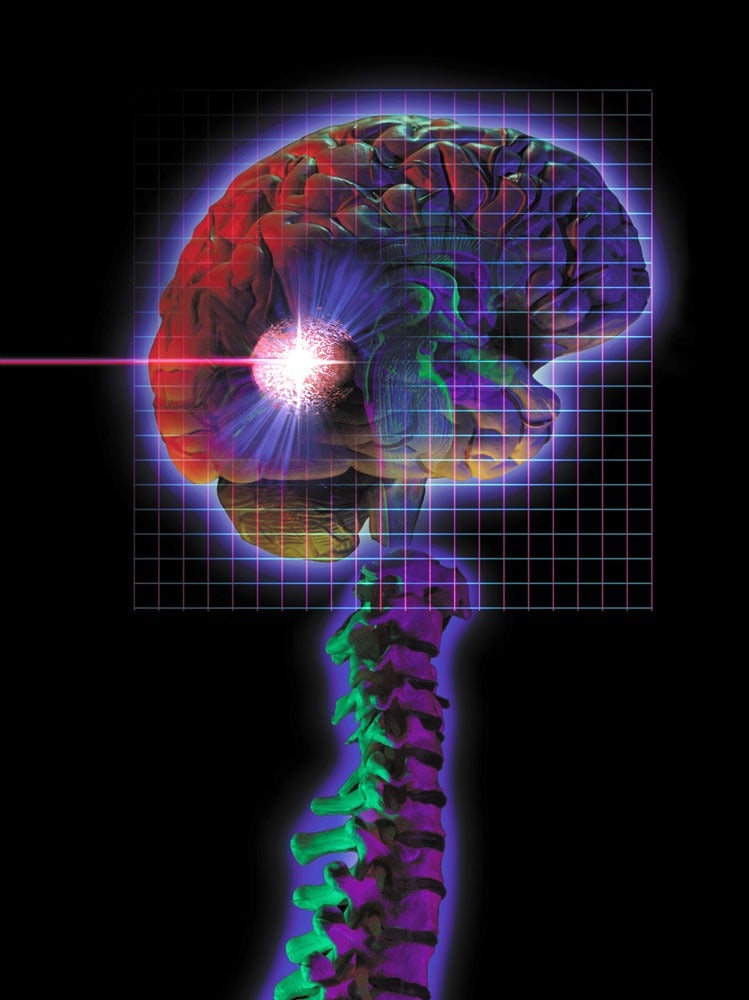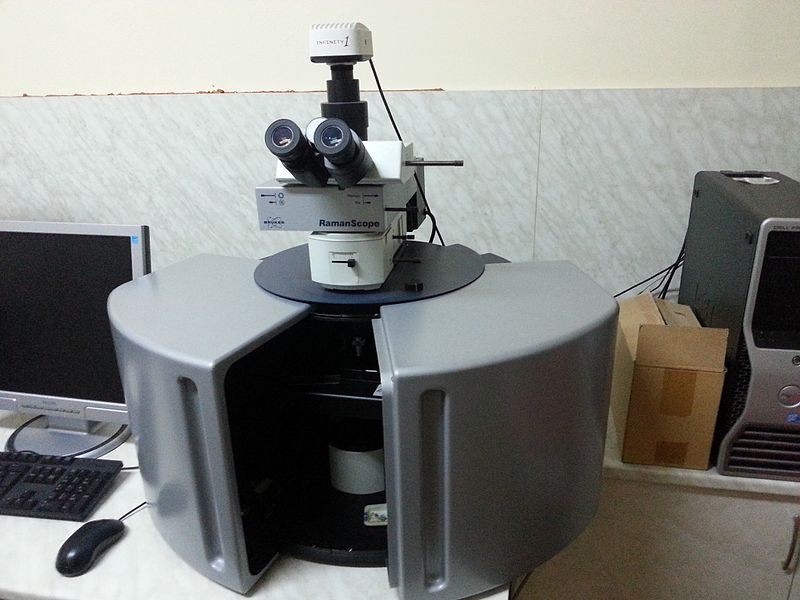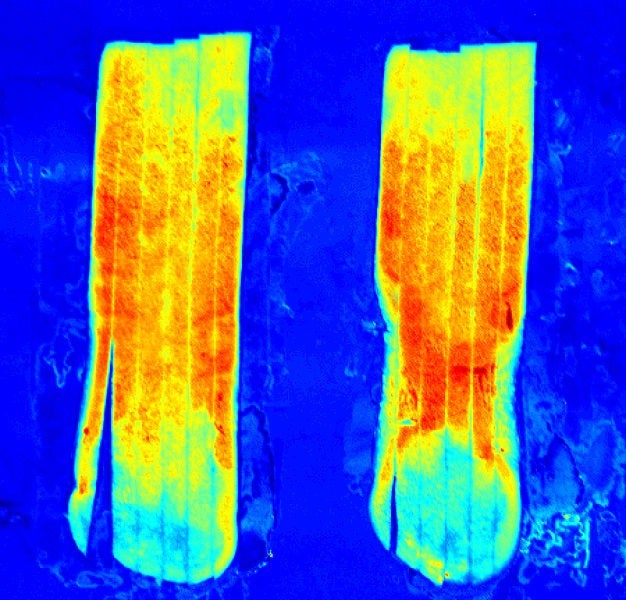
Biophotonics is the science of producing and using photons or light to image, identify and engineer biological materials. The potential of the technology in optimising diagnosis and treatment is huge. Elena Beletkaia, project leader at the European Photonics Industry Consortium, discusses its significance for the industry.
Biophotonics plays a key role in the development of novel healthcare tools that offer less or non-invasive methods to enhance the observation and measurement of symptoms, enable earlier treatment of patients and improve cost-efficiency.
Biophotonic technologies include fluorescence, hyperspectral and diffuse-reflectance imaging, Raman spectroscopy, OCT (optical coherence tomography) and photodynamic therapy, as well as other light-induces treatment solutions.
In diagnostics, photonics-based methods are advantageous due to the multidimensional data that is collected and analysed.
For example, with hyperspectral imaging, non or minimal invasiveness allows more frequent imaging or sensing with high spatial and temporal resolution down to the scale of cells and molecules; for instance, with Raman spectroscopy.
For therapeutic applications, light can be used to activate photosensitive chemical compounds enabling photodynamic therapy.
Also, high energies of light can be used to alter chemical or mechanical properties of the tissue or group of cells, such as during ablation.
Naturally, lasers play an important role in biophotonics. The range of the wavelength used spreads between 600nm (visible) and 3,000nm (near infrared).
Other requirements include increased stability, low noise and good beam quality.
French manufacturing company OXXIUS addresses the demand of light sources for biophotonics by providing lasers including a large panel of wavelengths, intended to match commonly used fluorophores and other matter-light interaction modalities.
OXXIUS’s mono-frequency – or SLM (single longitudinal mode) – laser sources are designed with an emphasis on their stability; no mode-hop during operation and power adjustments; frequency stability against temperature variations; and no frequency drift in between on/off cycles, suppressing the need for calibration.
These advances, combined with improvements of other biophotonics components, enable photonics-based healthcare technologies to improve sensitivity, precision and speed.
Together with improved overall accuracy these technologies enable rapid, personalised diagnosis and more effective therapy.
The benefits of Raman imaging in biophotonics
Today, there are many medical analyses requiring long preparations and possibly highly trained staff.
As an example, bacteria detection and identification requires lengthy cultures that delay the administration of adequate drug treatment.
Cancer cell detection requires a biopsy followed by a long sample preparation and microscope imaging by the final analysis of the pathologist.
If the biopsy is made during a surgery, information is available too late.
Raman spectroscopy is a chemical-analysis method compatible with the presence of water and that does not require any labelling.
For this reason, this method is perfectly suited to, for instance, living cell analysis.
Such in vitro biochemical characterisation of specimens with Raman microscopy is typically done by mapping of a sample at each pixel with spatial resolution of 100μm, followed by reconstruction of the spatial annotation of the sample.
Cancer research showed that there are significant differences in Raman spectra between cancerous tissue versus healthy tissue.
Namely, a tumour contains more water than surrounding healthy tissue with discriminative power up to 98%.
Acquiring similar Raman spectra in an in vivo setting (within living subjects) can be challenging.

A Raman spectroscopy system commonly consists of a light source to illuminate the sample and detector to acquire the signal.
The light source is typically a laser matching the requirement to generate Raman signal and is in 660–720nm spectral and 100mW power range.
To allow the best performance of Raman spectroscopy-based molecular analysis and bacteria detection, the lasers should also feature high-spectral and beam quality.
The detector in Raman systems is a back-illuminated charge-coupled device camera – these specialised cameras allow the detection of photons with high sensitivity.
Ex vivo and in vivo Raman spectra measurement are made possible in a fibre-optic setting.
Recent technical advancements in lasers, detectors and fibre-optic probes allow SurGuide – a collaborative effort of RiverD International, art photonics and the Erasmus University Medical Centre – to develop the handheld device, MarginGuide.
When complete, this device will be applied directly to tissue, without the need for tissue preparation steps, reagents, dyes or labels, and yields detailed information about the molecular composition of tissue, providing support to surgeons to delineate tumour resection.
There are many technological developments made on the way to improve Raman spectroscopy method both in vitro and in vivo.
The next challenge is the clinical implementation. The background auto-fluorescence of the biological tissues, as well as Raman background due to the silica fibres used in the probes and the cost of the equipment, will have to be taken into account.
Hyperspectral imaging
Hyperspectral imaging is the combination of the spatial and spectral information.
This spectral technique is based on the differences in the interactions of various materials with the different wavelengths. Most common hyperspectral imaging is acquired in the spectral range of 400–2,500nm.
The produced data is a multidimensional hyperspectral cube, containing spatial and spectral information from a given image.
The acquired data can be visualised in different ways – a full spectrum for a single pixel can be reconstructed or an image reflecting the spatial information for one selected wavelength can be reconstructed.
The shape of the spectrum will be dependent on the absorption and reflection properties of the material creating its spectral fingerprint.
Therefore, by analysing the spectral fingerprints present in a hyperspectral image, it is possible to discriminate between the different materials.
Hyperspectral imaging becomes increasingly popular and useful in many fields as performance and usability increases.
In medical settings, hyperspectral imaging gains attention as well. Various tissues also possess distinctive spectral fingerprints.
With just a visual inspection of the shape of the reconstructed spectra, it is possible to identify the type of tissue present at each pixel of the image.
Moreover, spectral changes can reveal chemical changes in the tissue, such as polymerisation, oxygenation of haemoglobin, metabolic state or general health.
All of the cameras that deliver sufficient spectral quality, such as fluorescence measurements, use prisms or gratings as wavelength dispersive elements and are inherently scanning cameras, which do not deliver instantaneous hyperspectral data cubes.

Many applications benefit especially from the latest developments of high-quality snapshot hyperspectral cameras.
For instance, during surgery it is important to measure the oxygenation of organs or correctly assess tumour margins, and with scanning cameras this is very difficult if not impossible.
New camera developments from Fraunhofer IOF or Cubert, that combine high spectral quality at moderate spatial resolution with snapshot capability, will result in higher success rates in surgery.
This camera also benefits from the continuously variable bandpass filter (CVBPF) developed and manufactured by Delta Optical Thin Film.
The CVBPF’s transmission characteristics feature a centre wavelength range in VIS/NIR with a bandwidth of approximately 2% of its centre wavelength.
In a wide wavelength range, the transmission is higher than 90%. But even more important than the peak transmission, all undesired radiation of 200–1,150nm is suppressed better than OD4.
While the CVBPFs offer high transmission, they are fully blocked in the light-sensitive wavelength range of silicon-based detectors.
The combination of CVBPFs with silicon detectors allows the design of compact, robust, and affordable spectral imaging detectors that offer several more advantages and benefits over conventional approaches; for example, huge aperture, higher transmission, 3D and snapshot capability and more.
Applying biophotonics in healthcare
Choosing the appropriate hyperspectral-imaging system for medical applications is the main challenge in making the transition into the clinical world.
The reliable hyperspectral-image-processing methods also need to be further improved to enable hyperspectral-imaging techniques to become widely applicable evaluation methods in medicine.
Clinical implementation of new techniques is always a challenging task. A clear understanding of the medical needs has to be achieved alongside the comprehensive overview of the existing innovative industrial solutions.
The European Photonics Industry Consortium (EPIC) “meeting on photonics for cancer diagnostics and treatment at NKI” in December 2019 brought together experienced clinicians and the biophotonics industry supply chain to facilitate closure of the existing gap and make the next step towards clinical implementation of the powerful biophotonics technologies.
The meeting will show the latest achievements of various biophotonics techniques in the clinical setting, address the high demands to the technological aspects driven by complexity of the biological tissue, as well as the requirements and limitations to the equipment used in the clinical environment.
The developments in biophotonic tools, as well as interoperative tumour margin assessment, such as hyperspectral and diffuse reflectance imaging, Raman spectroscopy, OCT fluorescence imaging and others, will be discussed alongside novel developments in the fields of the photodynamic therapy and other light-induces treatment solutions.






